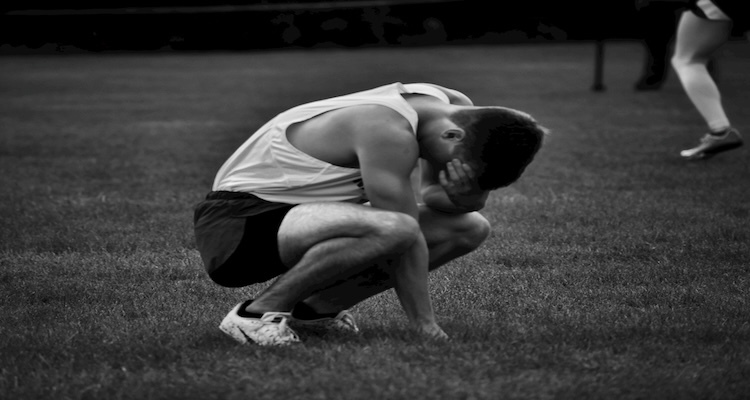
Many people might naively believe that professional sports and substance abuse or addiction are unrelated, except perhaps for retired athletes. They argue that athletes undergo rigorous doping testing and get a natural high from playing their sport, so they wouldn't need artificial substances. However, it's often forgotten that athletes can get injured on the field and might be prescribed painkillers to ease their pain. Some of them become addicted to these medications and continue using them even after recovering from their injuries inside a sports clinic. They encounter significant road bumps when they decide to return to the field after getting clean. Today, we’ll discuss the challenges athletes face when returning to sports after substance abuse. Stay tuned!
It might not be a common fact, but substance abuse is a widespread issue in sports (at all levels), and some studies have shed some light on why athletes turn to substances. Besides using substances to treat their post-injury pain, they might use drugs to boost performance, manage untreated mental health issues, or cope with pressures like competition and retirement.
Doping is nothing new: the practice dates back to ancient times, long before organized sports even existed. Over time, doping strategies have evolved alongside advances in drug testing and scientific research. Despite the strict bans and severe consequences imposed by various sports organizations, athletes continue to find new ways to use performance-enhancing drugs without being caught.
Much like just about everything else, the above can be explained through cultural factors.
In Western culture, the drive to be the best often starts from a young age: many kids grow up with a strong emphasis on achieving success. This is all thanks to the culture that glorifies winners and high achievers. This pressure to excel at all costs greatly impacts athletes, especially those in contact sports like football, where physical contact is a key element of the game.
For many athletes, their self-esteem and identity are closely tied to how well they perform. Even though they know they could face serious injuries or long-term health issues, their passion for the sport and the cultural push to succeed keeps them going. The mindset of playing through the pain and putting competition above everything else creates an environment where using performance-enhancing drugs can seem like the only way to stay on top.
This relentless pursuit of excellence makes athletes more vulnerable to drug use (if you haven’t read David Foster Wallace’s Infinite Jest, read it, as it gives more insight into the sports & drugs junction). The pressure to perform well and meet high societal and cultural expectations often leads them to substances that can help manage pain, recover from injuries, or boost their performance, contributing to the widespread issue of drug abuse in professional sports.
Now that we've explored why athletes turn to substances let's examine the obstacles they face when trying to return to the game.
Many athletes struggle with addiction to prescription pills following an injury, so let’s use this as an example. For these athletes, returning to their sport starts with rehab. The first crucial step is detoxing under the care of medical professionals. This process involves safely cleansing the body of drugs while managing withdrawal symptoms.
After the detox phase, athletes move on to therapy, which can be either inpatient or outpatient based on their needs (may also include the use of medication to support their recovery). Inpatient therapy offers intensive, structured support, while outpatient therapy allows for more flexibility. Post-rehab group sessions then help athletes reintegrate into their activities and maintain their recovery with the support of a community. Speaking of community, athletes with substance use disorders face another challenge: a significant stigma that complicates their recovery.
There’s always a social stigma around substance abuse. But when an athlete, someone who promotes physical activity and healthy choices, struggles with it, the public stigma can be even more intense. People often expect athletes to embody peak physical and mental health, making it harder for them to openly address their addiction without fear of judgment or ridicule in the eye of the public.
When athletes return to their sport after battling SUDs, the heightened stigma can create a good amount of obstacles. They may worry about how their past struggles will impact their career, reputation, and relationships with teammates and fans. The pressure to uphold a flawless public image makes it challenging for them to be open about their recovery; this can often lead to further isolation. Unfortunately, this stigma can affect their willingness to seek ongoing support and may hinder their overall journey to full recovery. Addressing and reducing this stigma is essential for helping athletes with SUD reintegrate into their sport and continue their path to healing.
Last but not least, returning to a sport after recovering from SUD has actual physical ramifications. The athletes’ bodies may be negatively impacted by the process, affecting their coordination, strength, endurance, and general fitness.
Rebuilding and rehabilitation are frequently necessary steps to return to optimum performance after substance use, which can result in a variety of health problems. As athletes strive to return to their previous level of performance, they may encounter physical obstacles such as decreased endurance or heightened vulnerability to injuries. They have to adjust to the changes in their physical capacities and sports nutrition together with overcoming their addiction, which can be discouraging and stressful.
There are several challenges athletes face when returning to sports after substance abuse, but each of these challenges has a potential solution. Improved treatment programs, reduced social stigma, and a more understanding public can make a significant difference. Additionally, both athletes and the public need to exercise patience as athletes work to return to their previous form. A combination of these factors can greatly enhance the recovery process and support athletes in their journey back to peak performance.
This is a Sponsored Post
Photo by leah hetteberg on Unsplash
